The Aurora Test Site Network: A smart approach to developing the Aurora Driver
Ecosystem | October 27, 2020 | 3 min. read
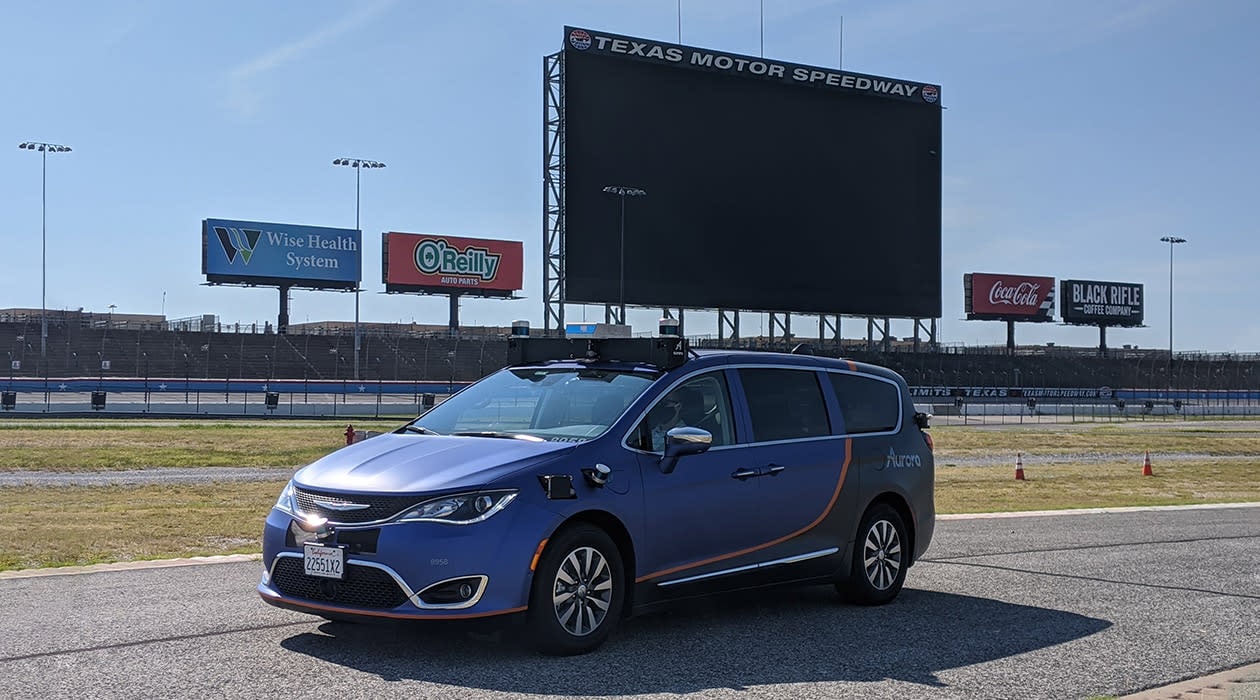
At Aurora, we make decisions deliberately. From our experience, we know that focusing on the smartest approach—even if it isn’t the easiest or most obvious—will pay dividends down the road for delivering our technology safely, quickly, and broadly.
An example of this is the Aurora Test Site Network. Though every self-driving company needs a closed site to test its technology, we knew creating a robust and effective system from existing tracks would help us move as quickly and safely as possible.
With half a dozen locations and counting, the Aurora Test Site Network allows us to efficiently test, validate, and make rapid progress on the Aurora Driver in a variety of geographies near our growing areas of development. This breadth allows us to test the Aurora Driver on many different scenarios, ultimately giving us the ability to develop a Driver for all vehicle types and purposes.
Why do we need closed test sites?
As we develop the Aurora Driver to operate safer than a human, a critical step is testing and validating our progress safely. When we train the Aurora Driver to do something new or handle a new situation, we typically perform a mix of manual driving on the road in relevant and unique scenarios that we turn into virtual tests for the Aurora Driver. After running and passing these tests in simulation via our Virtual Testing Suite, we’ll test the Aurora Driver in a controlled environment, like a closed testing track, to ensure the Aurora Driver can perform the new skill as expected. The data we collect from the closed course, manual driving, and our simulation testing is holistically reviewed by our engineering teams. Once we pass all of these various tests, we know we’re ready for public roads. Progress to us means we’re constantly improving and teaching the Aurora Driver to do new things or handle more complex scenarios, which ensures we’re developing safely and optimizing our time on public roads.
Testing on closed courses also enables us to safely capture and test edge cases, equating to faster and more efficient development. Scenarios like a cyclist darting into our lane to avoid a car door swinging open rarely occur in real life, but a closed course gives us the opportunity to safely create and test these situations with pedestrian dummies. From here (and similar to if we’d captured the scenario on the road), we create a simulation, and iterate on variations of that simulation, to train the Aurora Driver to safely navigate the situation.
Here’s a closer look at a few of the tracks in the Aurora Test Site Network and examples of the testing we do at each.
“With half a dozen locations and counting, the Aurora Test Site Network allows us to efficiently test, validate, and make rapid progress on the Aurora Driver in a variety of geographies near our growing areas of development. This breadth allows us to test the Aurora Driver on many different scenarios, ultimately giving us the ability to develop a Driver for all vehicle types and purposes."
Texas Motor Speedway — Fort Worth, TX
Everything’s bigger in Texas and Texas Motor Speedway is no exception. This location is critical because it’s very close to our Texas location, so we can train the Aurora Driver on logistics routes in the Texas Triangle and our Texas-based Truck Operations Specialists on how to safely operate the Aurora Driver.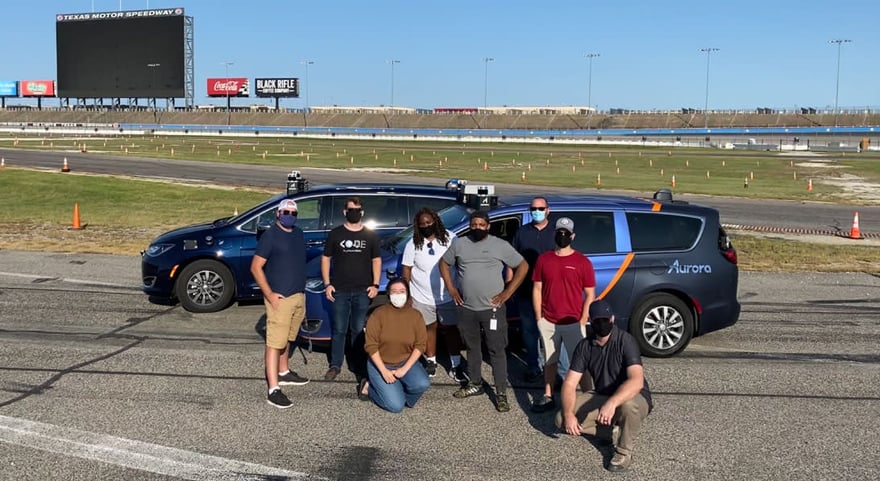
Our awesome operations team at TMS for a full day of testing the Aurora Driver.
Former Naval Air Station — Alameda, CA
A large airstrip that was originally used by the U.S. Navy, the Naval Air Station Alameda is ideal for tests that require us to operate at highway speeds. Controls testing, shown below, are tests we run on the brakes, steering, and throttle of a vehicle to understand how the vehicle handles. Once we know how powerful each control is in various situations, we pass that data to the Aurora Driver.
GoMentum Station — Concord, CA
GoMentum Station is an open and expansive location that makes it ideal for complicated testing, like safety tests with dummy pedestrians, urban development, training our Vehicle Operators, and low-speed hardware testing, key for our FirstLight Lidar. GoMentum Station also has a significant amount of marked roadways at varying elevations, enabling us to be creative and test our vehicles, including our trucks, at higher speeds, and in a variety of scenarios.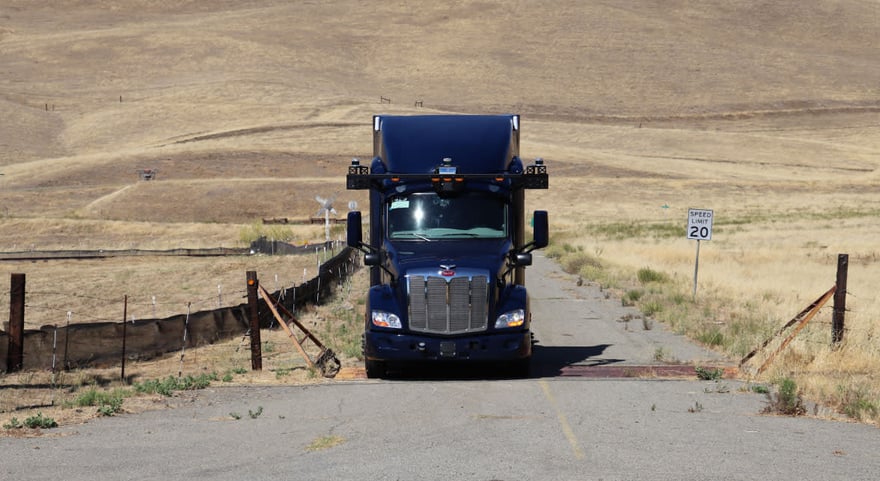
One of our trucks out scouting complex routes with mixed elevation.
Crows Landing — Central Valley, CA
Crows Landing, a former U.S. Navy base now business park in the Central Valley, uniquely offers the real estate necessary for testing a truck and attached trailer—which can be close to 100 feet long—at highway speeds. This space will be critical as we continue to test and make progress on our trucks.
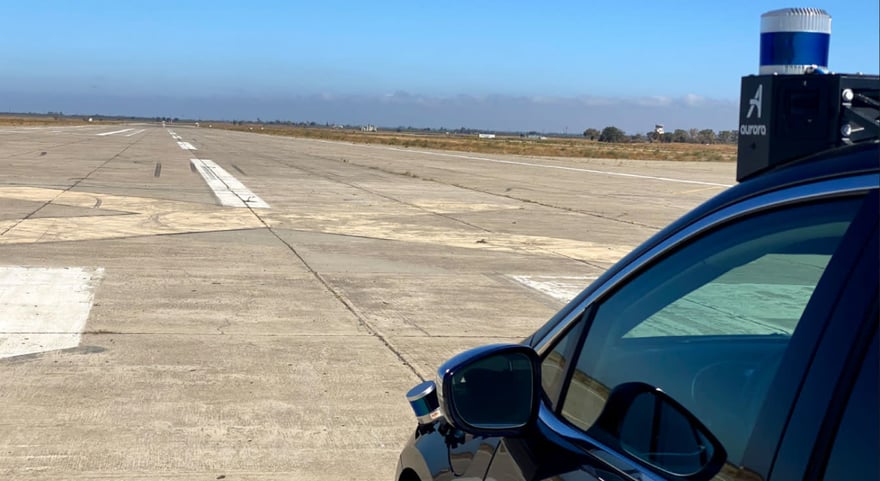
All the space we need for testing our trucks with trailers at speed.
Pittsburgh International Race Complex — Wampum, PA
Also known as Pitt Race, this location is not only near our Pittsburgh headquarters, but also offers us the ability to test the Aurora Driver in weather conditions that aren’t as frequent on the West Coast.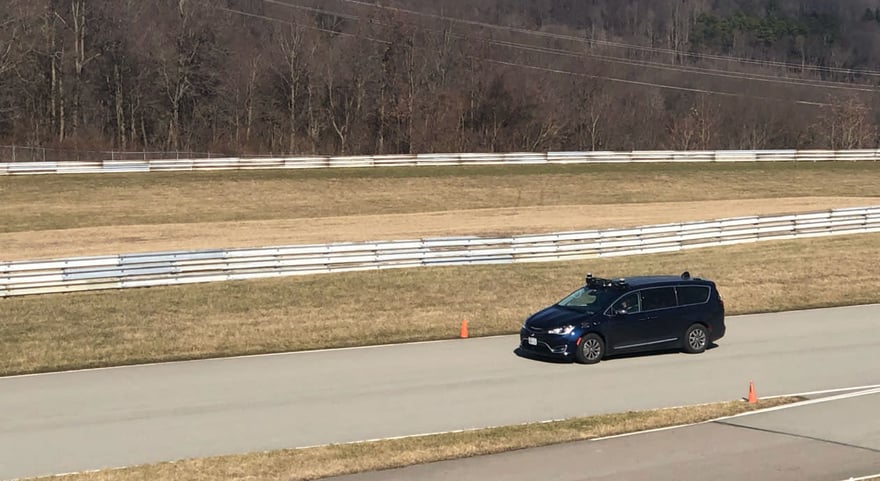
As part of our Pacifica integration, we used Pitt Race to test our Pacificas at speed during the winter in Pittsburgh.
As we continue our progress, we’ll expand our Network to secure test sites that enable us to test a variety of vehicle types, from sedans to tractor-trailer trucks, at high-speeds, in challenging weather, complex environments, like dense urban settings with pedestrian dummies, and more. Having access to this variety near our growing locations of testing and development is critical for delivering a Driver that is ultimately able to safely handle the real world.
We continue to hire for positions across the company. If you’re interested in joining our team, check out our open opportunities on our career page.
Delivering the benefits of self-driving technology safely, quickly, and broadly.